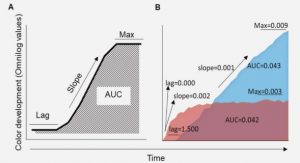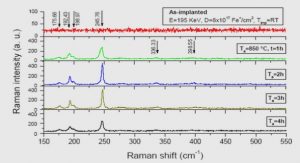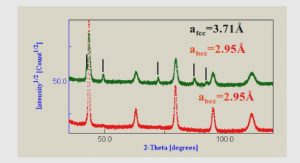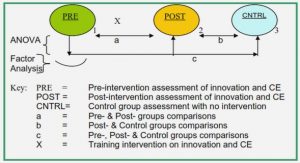Get Complete Project Material File(s) Now! »
CHAPTER 3 THEORETICAL GROUNDING AND METHODOLOGY OF THE STUDY
INTRODUCTION
Chapter 2 discussed the literature relevant to the induction and professional development support of the newly qualified professional nurse. It also described the perspectives of other researchers on enhancing the clinical competence of the newly qualified professional nurses, and their induction by the experienced and expert professional nurses, preceptors and mentors who support them.
In this chapter, Benner’s (1984) Novice to Expert Model will be discussed as the theoretical framework that guides the study. The research methods used in the study will also be described in detail.
THE NEED FOR A THEORETICAL FRAMEWORK TO GROUND THE STUDY
Barnum (1994) states that “theory and research form a recycling chain in which theory directs research, research corrects theory and corrected (or confirmed) theory directs more research” (Barnum 1994:272). Patricia Benner’s Novice to Expert Model (1984) will direct this research. The model is described in detail with an explanation of how it will be applied to the study.
The developmental levels of the theoretical framework: from novice to expert as applied to the study
Benner’s (1984) Novice to Expert Model is a theoretical framework underpinning the study. It has five development levels, each level building on the previous one as the nurse advances from a neophyte level, gaining knowledge, skills, perceptions, intuition, wisdom and experience in clinical practice (Benner 2001: 20); Kaminski 2010:967). The current study is concerned with the development of the nurses through the first three levels of the model, aiming at determining the induction and professional development support given to, and that which is required by, newly qualified professional nurses who are at the novice level, moving to the advanced beginner level and proceeding to the competent level. The support is expected to be given by those at the proficient to expert level as mentors during the transition period.
The model consists of a continuum of development from the lowest level of novice to the highest level of expert. The model was initially proposed by Hubert and Stuart Dreyfus (1980) and was known as the Dreyfus Model of Skill Acquisition (Benner 1982:402; Gobet & Chassy 2008:131). The Dreyfus model of skill acquisition was later modified and applied to nursing by Patricia Benner (Benner 1982:402; Kaminski 2010:967). The levels build onto one another and can be applied to various aspects in nursing. The levels are novice, advanced beginner, competent, proficient and expert (Benner 1984:34).
The newly qualified professional nurses serving the compulsory community service in South Africa
The newly qualified professional nurses in the study can be equated to the first three levels of development as follows:
Novice level
In many studies this level is applied to students of nursing, but “Benner has suggested that nurses in higher levels of skill in one area of practice could be classified at the novice level if placed in an unfamiliar area or situation” (Marriner-Tomey 1994:167). In this study, the researcher equates the novice level with the newly qualified professional nurse from a nursing education institution, starting community service up to the second month of community service. The newly qualified professional nurse starts to make meaning of the new practice area, tries to adapt to not being a student nurse and is learning a new role. He or she works under the direct supervision of an experienced professional nurse, who is either proficient or an expert (Benner 2001:20).
Advanced beginner
The researcher equates the advanced beginner level with the newly qualified professional nurse from the third month of community service to the fifth month of community service. Marriner-Tomey (1994) states that “nurses functioning at this level are rule-guided and task completion oriented and have difficulty grasping the current patient situation in terms of the larger perspective” (Marriner-Tomey 1994:167). The newly qualified professional nurse demonstrates acceptable clinical performance, and has gained enough prior experience during mentoring sessions to recognise recurring meaningful components of clinical practice. The advanced beginner uses principles to guide actions, and works under the indirect supervision of the experienced professional nurse (Benner 2001:22).
Competent
The competent level can be equated with the newly qualified professional nurses from six months to twelve months of community service (Lima, Newall, Jordan, Hamilton & Kinney 2016:878). The professional nurse at this level has gained experience in clinical practice, is more aware of long-term goals, and gains perspective from planning own actions based on conscious, abstract and analytical thinking (Benner 2001:22). The nurse achieves greater efficiency and organisation, can work without supervision and can be in charge of a unit. Although Benner (1984:38) states that competence is achieved within two to three years of working in the same clinical area, in this study the researcher agrees with Garside and Nhemachena (2013:542), who state that “competence in everyday nursing practice seems to mean being slightly more than being newly qualified and is only fully achieved once the new nurse has gained the ability to be totally accountable for their professional actions”. The newly qualified professional nurse in South Africa is new as a professional but has been a student in nursing education for a period of four years. In addition to the theory, the nurse has achieved 4000 clinical hours in nursing and midwifery as a requirement for registration by the SANC (SANC 1985:3).
The newly qualified professional nurses at advanced beginner stage have coped with enough real situations by themselves or with the help of a mentor (Benner 2001:22).
Proficient level
The professional nurses in the clinical areas perceive and understand clinical situations as whole parts. There is improved decision making. Learning is from experience; they can forecast what to expect in certain situations and can modify plans accordingly. They have experience of clinical practice and are able to supervise and mentor the newly qualified professional nurses. In their study concerning a nursing faculty mentoring programme, Snelson, Marstolf, Dieckman, Anaya, Cartechine, Miller, Roche and Shaffer (2002:655) found that new faculty members were formally mentored by experienced faculty members, guiding the novice faculty to transit to a new culture and fulfil the expectations of their new work. At this level, the competent professional nurse is able to give safe care, knows how to perform specific tasks. She gradually becomes proficient in managing healthcare situations, seeing the picture as a whole, not parts (Benner 2001:28).
Expert level
The professional nurse at this level can be equated with the operational nurse manager who has been in the same clinical area for a long period. Such operational nurse managers no longer rely on principles, rules or guidelines to connect situations and determine actions. They have more background experience and an intuitive grasp of clinical situations. They perform fluidly and flexibly and are highly proficient (Benner 2001:32). They are charged with the responsibility of planning and managing patient care in a specific clinical area. They can also manage supervision and mentorship of the newly qualified professional nurses allocated to the specific clinical area (Benner 2001:34).
Application of the Novice to Expert theoretical framework by other authors
The novice to expert framework has been used by various researchers to serve as a catalyst for staff development programmes like mentorship, with the aim of facilitating nursing excellence. It has been applied in order to gain insight into managing clinical problems, to practise skills, and to enhance clinical competence on various levels of nursing (Fero, Witsberger, Wesmiller, Zullo & Hoffman 2009:140). Nursing education bodies have used it to guide their curricula and clinical accompaniment of student nurses (Field 2004:560; Shuldham 1993:436).
Nursing education
Benner’s novice to expert model was used to develop a post-basic nursing curriculum of a cardiorespiratory clinical nursing programme. Shuldham (1993:436) reported on the curriculum, stating that the curriculum was designed to promote and support the practice of professional nurses in cardiorespiratory nursing. She explains that the levels of development in the model helped to answer questions about academic and practice levels. The nurses were assessed and were found to be “novices in some respect, while some were found to be advanced beginners in cardiorespiratory nursing although competent general nurses” (Shuldham 1993:437). She agrees with Benner’s (1984) view that in different situations a person may operate on one level, whereas in others that person may operate on a different level.
At Shuldham’s institution, the curriculum designers used Benner’s (1984) levels of practice and Bloom’s (1956) academic levels to align and classify their course modules (Shuldham 1993:439). The author concluded that “underpinning curriculum development at all levels with the work of Benner (1984) and Bloom (1954) has provided a framework for further development” (Shuldham 1993:440).
Field (2004) used Benner’s (1984) theoretical framework to compile a literature review on the value of learning in clinical practice. She acknowledges the five stages of development from novice to expert as the potential development of nursing expertise and identification of nursing competencies (Field 2004:560). Field is of the opinion that the key to progressing from novice to expert is through excellent mentor support, “otherwise the student would make defective assumptions based on inadequate personal reflections” (Field 2004:561).
Field (2004) goes on to discuss the fact that practical skills achievement of newly qualified nurses may be at variance with what the managers were expecting, owing to the discrepancy between classroom theory and the learning taking place in the clinical area (Field 2004:562). In reconciling theory and practice, she suggests that mentors in the clinical areas should utilise bilateral facilitation, whereby mentors will learn the current theory from the students in order to update and perfect the skills to be mastered by the students (Field 2004:563). The mentor is important in relating theory to practice, as well as coaching for excellent practice outcomes, “to coach students from novice to expert performances” (Field 2004:565).
CHAPTER 1ORIENTATION TO THE STUDY
1.1 INTRODUCTION
1.2 BACKGROUND TO THE RESEARCH PROBLEM
1.3 STATEMENT OF THE RESEARCH PROBLEM
1.4 RESEARCH QUESTION 5
1.5 RESEARCH PURPOSE
1.6 RESEARCH OBJECTIVES
1.7 THEORETICAL/METATHEORETICAL GROUNDING
1.8 RESEARCH DESIGN
1.9 DEVELOPMENT OF GUIDELINES
1.10 DEFINITION OF CONCEPTS
1.11 SIGNIFICANCE OF THE STUDY
1.12 SCOPE AND LIMITATIONS
1.13 EXPOSITION OF THE RESEARCH PROGRAMME
1.14 CONCLUSION.
CHAPTER 2LITERATURE REVIEW
2.1 INTRODUCTION
2.2 THE STATUS OF PROFESSIONAL NURSE TRAINING IN SOUTH AFRICA (SA)
2.3 COMPULSORY COMMUNITY SERVICE
2.4 CHALLENGES DURING THE TRANSITION PERIOD FROM STUDENT TO PROFESSIONAL NURSE
2.5 PROFESSIONAL DEVELOPMENT SUPPORT
2.6 CONCLUSION
CHAPTER 3THEORETICAL GROUNDING AND METHODOLOGY OF THE STUDY
3.1 INTRODUCTION
3.2 THE NEED FOR A THEORETICAL FRAMEWORK TO GROUND THE STUDY
3.3 THE RESEARCH METHODOLOGY
3.4 DATA AND DESIGN QUALITY
3.5 ETHICAL CONSIDERATIONS
3.6 APPROACH FOLLOWED IN GUIDELINE DEVELOPMENT
3.7 CONCLUSION
CHAPTER 4 DESCRIPTION OF THE QUANTITATIVE DATA RESULTS: ORIENTATION PROGRAMMES AND THE SURVEY
4.1 INTRODUCTION
4.2 ANALYSIS OF ORIENTATION/INDUCTION PROGRAMMES (QUANTITATIVE)
4.3 EVALUATION OF THE PROVINCES’ ORIENTATION PROGRAMMES
4.4 ANALYSIS OF DATA OBTAINED FROM NEWLY QUALIFIED PROFESSIONAL NURSES (QUANTITATIVE QUESTIONNAIRE QUESTIONS 1–43)
4.5 CONCLUSION
CHAPTER 5 DESCRIPTION OF THE QUALITATIVE DATA RESULTS – FOCUS GROUPS, INTERVIEWS AND THE SURVEY
5.1 INTRODUCTION
5.2 PHENOMENOLOGICAL METHOD OF DATA ANALYSIS
5.3 ANALYSIS OF THE INTERVIEWS WITH THE COORDINATORS OF COMMUNITY SERVICE
5.4 CONTENT ANALYSIS OF THE OPEN-ENDED QUESTIONS FROM THE SURVEY QUESTIONNAIRE (QUESTIONS 44–46)
5.5 CONCLUSION
CHAPTER 6 DISCUSSION AND INTERPRETATION OF FINDINGS
6.1 INTRODUCTION
SUB-THEMES AND CATEGORIES
6.2 ENHANCING PROFESSIONAL DEVELOPMENT SUPPORT OF NEWLY QUALIFIED PROFESSIONAL NURSES DURING COMMUNITY SERVICE
6.3 EXPERIENCES OF STUDY PARTICIPANTS REGARDING INDUCTION AND PROFESSIONAL DEVELOPMENT SUPPORT
6.4 CONCLUSION
CHAPTER 7 DEVELOPMENT AND VALIDATION OF THE GUIDELINES ON INDUCTION AND PROFESSIONAL DEVELOPMENT SUPPORT OF NEWLY QUALIFIED PROFESSIONAL NURSES
7.1 INTRODUCTION
7.2 DEVELOPMENT OF THE GUIDELINES
7.3 VALIDATION OF THE GUIDELINES
7.4 Presentation of validated guidelines
7.5 CONCLUSION
CHAPTER 8CONCLUSIONS, LIMITATIONS AND RECOMMENDATIONS
8.1 INTRODUCTION
8.2 PURPOSE OF THE STUDY
8.3 RESEARCH DESIGN AND METHODS
8.4 CONCLUSIONS
8.5 LIMITATIONS OF THE STUDY
8.6 RECOMMENDATIONS
8.7 CONTRIBUTION OF THE STUDY
8.8 CONCLUSION
REFERENCES
GET THE COMPLETE PROJECT
INDUCTION AND PROFESSIONAL DEVELOPMENT SUPPORT OF NEWLY QUALIFIED PROFESSIONAL NURSES DURING COMMUNITY SERVICE IN SOUTH AFRICA






